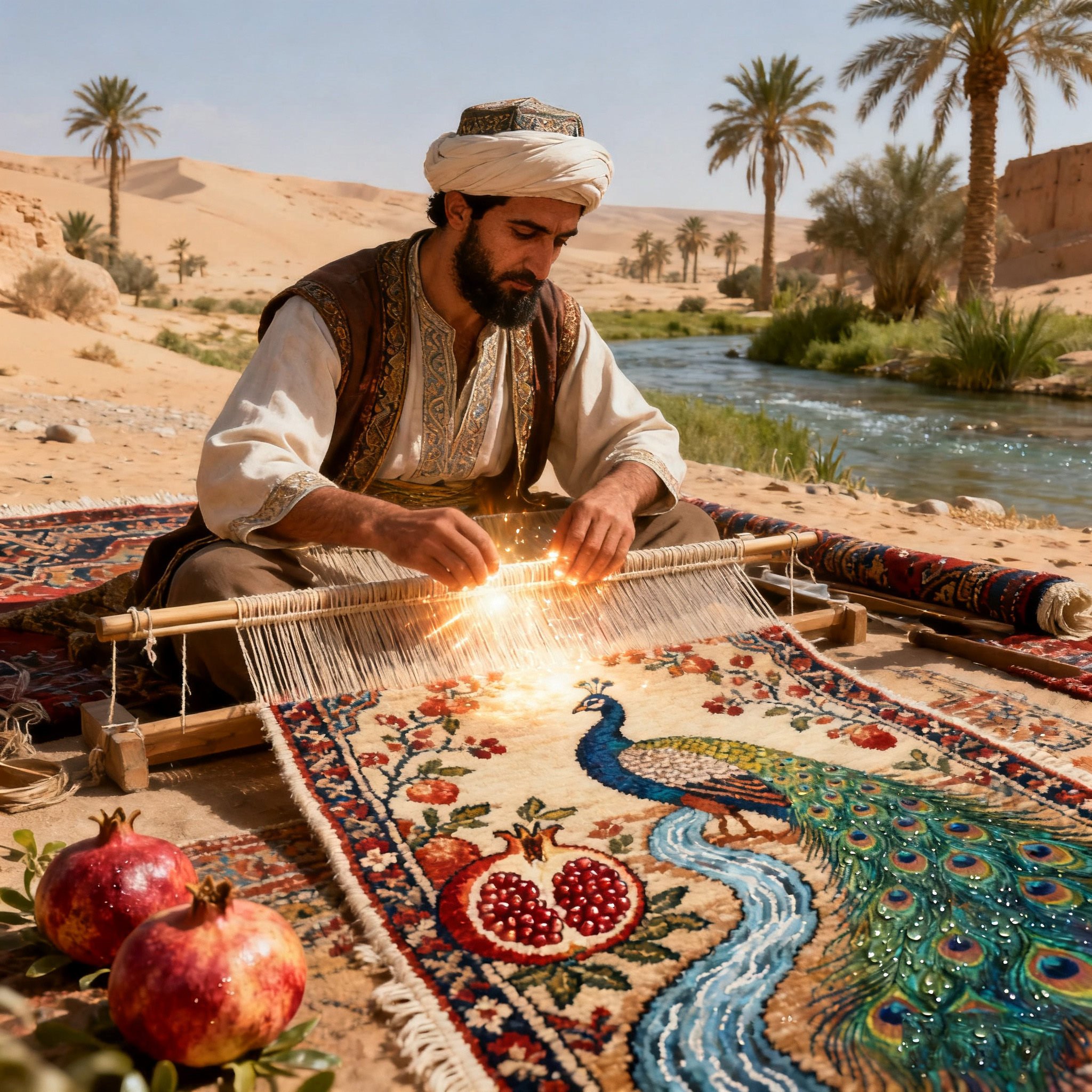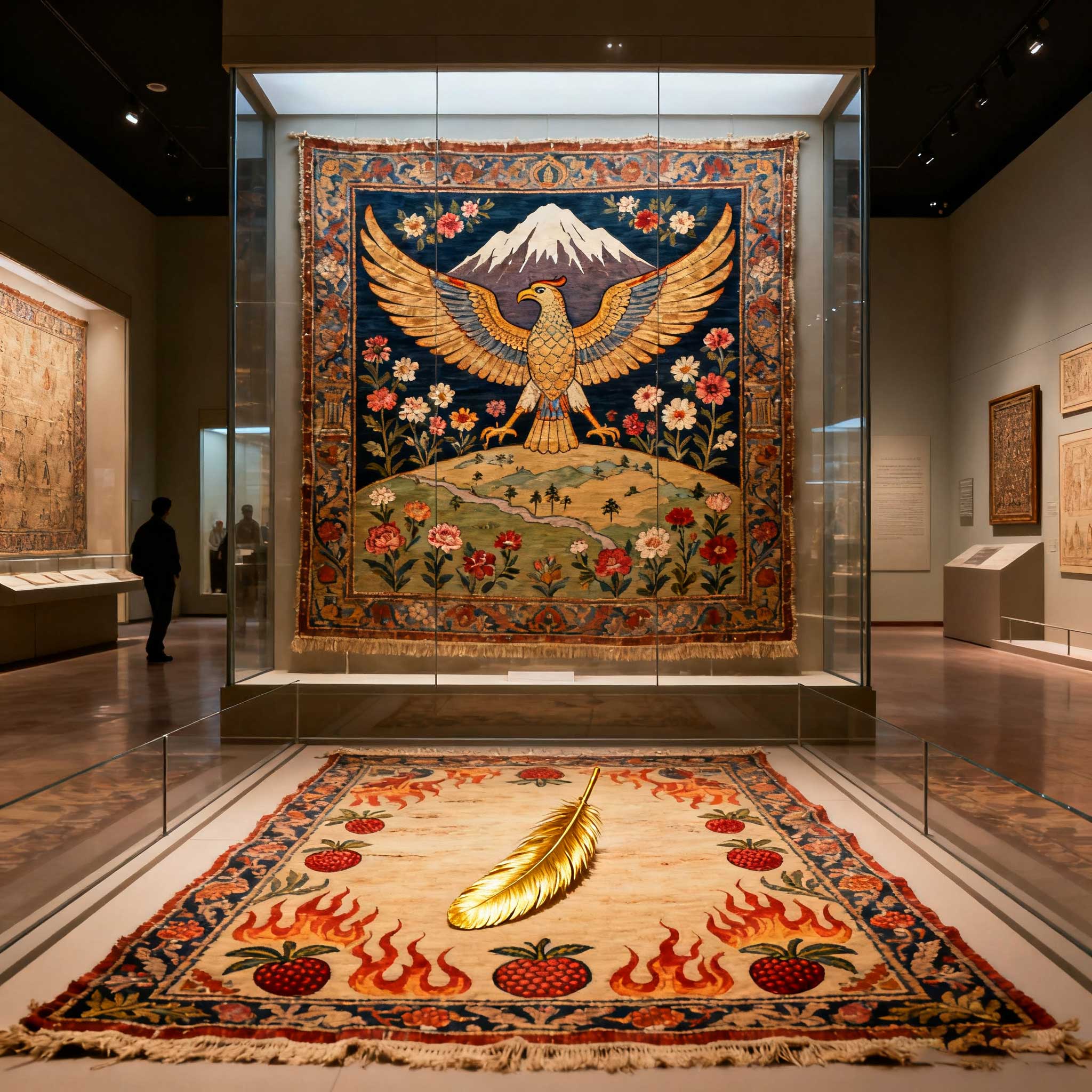+86-13516938893
Menu
global purchase

During the reign of the Sasanian Dynasty over Persia, there lived a weaver named Khosrow on the edge of an oasis near the Kerman Desert. His hands seemed to have been kissed by the light of the god Mithra—on the Persian rugs he wove, one could see the plump texture of pomegranate seeds, the gradations of a peacock’s tail feathers looked as if dampened by morning dew, and even the pattern of rivers flowing across the rugs seemed to hold the soft gurgle of running water.
At that time, the sacred fire temple in the oasis burned with an eternal flame, a symbol of light. But just after the autumnal equinox that year, the sacred fire suddenly dimmed; even the frankincense the priests sprinkled on it only emitted black smoke. Stranger still, the oasis’s spring water began to dry up, and the grapes on the vines shriveled and fell before ripening. The priest gazed at the sacred fire and sighed: “The shadow of Ahriman has fallen over this place. Only the feather of the Simurgh, the divine bird, can rekindle the light.”
The Simurgh was a mythical bird in Zoroastrian legend, dwelling atop the Alborz Mountains. Its wings could dispel darkness, and its beak held the proverbs of wisdom. Yet the mountain’s peak was perpetually sealed by blizzards, so even the bravest caravans dared not approach. Khosrow looked at the villagers’ chapped lips and the children’s disappointed eyes, then silently put away his weaving shuttles: “I will go find the divine bird.”
He took three of his finest woven rugs with him—The first was embroidered with the Big Dipper to guide his way, its threads infused with snowmelt from the Alborz Mountains; the second bore a map of oases in the desert, with hidden water sources marked in red dye made from saffron; the third was covered in patterns of flames and pomegranates, symbols of light and life in Persian hearts.
On the seventh day of crossing the desert, Khosrow’s water bag was empty. Just as his vision blurred, he heard the tinkle of camel bells behind a sand dune. A group of Turanian merchants had been drawn to the oasis map on his rug. The caravan leader ran his hand over the river pattern and exclaimed: “This is exactly the secret spring we discovered last year!” They gave Khosrow water and food, and in exchange, he cut off a small corner of the oasis map rug to give them.
When he reached the foot of the Alborz Mountains, a blizzard struck like the claws of Ahriman. Khosrow spread out the Big Dipper rug on the snow—and a miracle happened: the stars on the rug emitted a faint glow, guiding him up the mountain path. But halfway up, a boulder came crashing down. Instinctively, he shielded the rug with his body. A sharp pain shot through his ribs, and his blood seeped into the flame patterns on the rug.
Just as he was about to freeze, a shadow that blotted out the sky passed overhead. The Simurgh spread its wings—larger than a tent—and landed before him. Its golden-red feathers blazed like fire, and it chirped clearly: “Mortal, why do you risk your life to climb this mountain?”
Khosrow struggled to hold up the blood-stained rug: “Divine Bird, look—this rug is woven with the faith of the Persians. The sacred fire has died, the oases are withering. I would give anything to bring the light back.” The Simurgh lowered its head and gently pecked at the blood on the rug. Suddenly, it spread its wings and took flight, and a single golden feather drifted slowly down. “The light in your heart burns brighter than the sacred fire,” it said. “This feather will rekindle the sacred flame, but remember this—true light is never a gift from the gods, but the courage and kindness that mortals hold fast to in the dark.”
Khosrow clutched the feather and stumbled down the mountain. He returned to the oasis just in time for the Mehregan Festival. When he tossed the feather into the sacred fire at the temple, a golden flame shot up into the sky at once, its light piercing the clouds. The dried-up spring gushed forth with clear water again, and the shriveled grapevines sprouted new buds. The villagers cheered, spreading rugs and laying out pomegranates and honey in front of the fire temple.
From that day on, Khosrow added a new design to his most precious rug: the Simurgh spreading its wings and flying high above the Alborz Mountains, with the Persian land below bursting into bloom. A single golden feather drifted down, landing on a smaller rug embroidered with flames and pomegranates.

Later, this rug was presented to the Shah of the Sasanian Dynasty. Today, it still rests quietly in Tehran’s National Museum. Guides always point to the golden feather and tell visitors: “True light is never a gift from the gods, but the courage and kindness that mortals hold fast to in the dark.” To this day, weavers in Kerman still keep an old tradition—they weave tiny feather patterns into the corners of every rug, an eternal tribute to Khosrow’s oath.